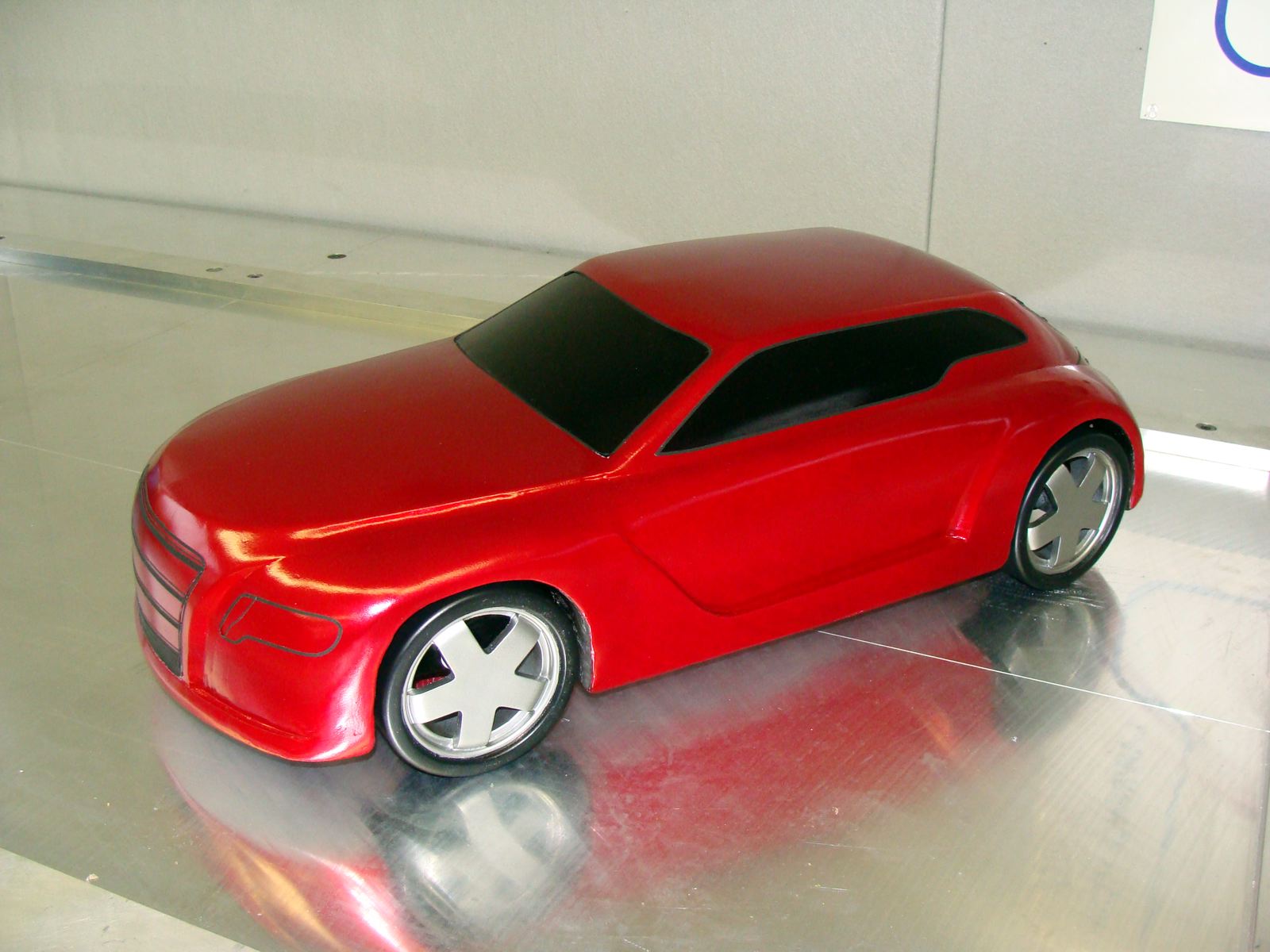
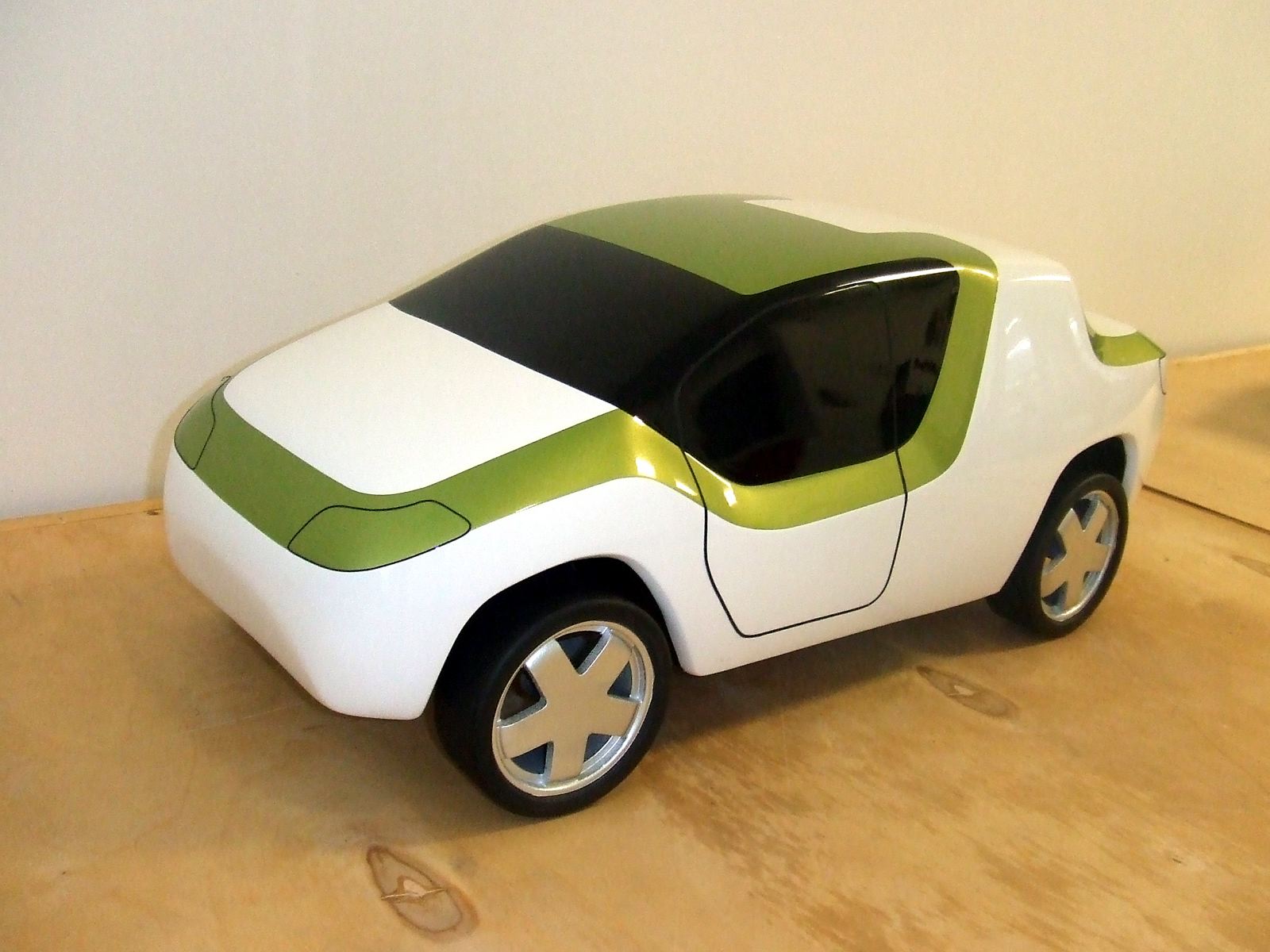
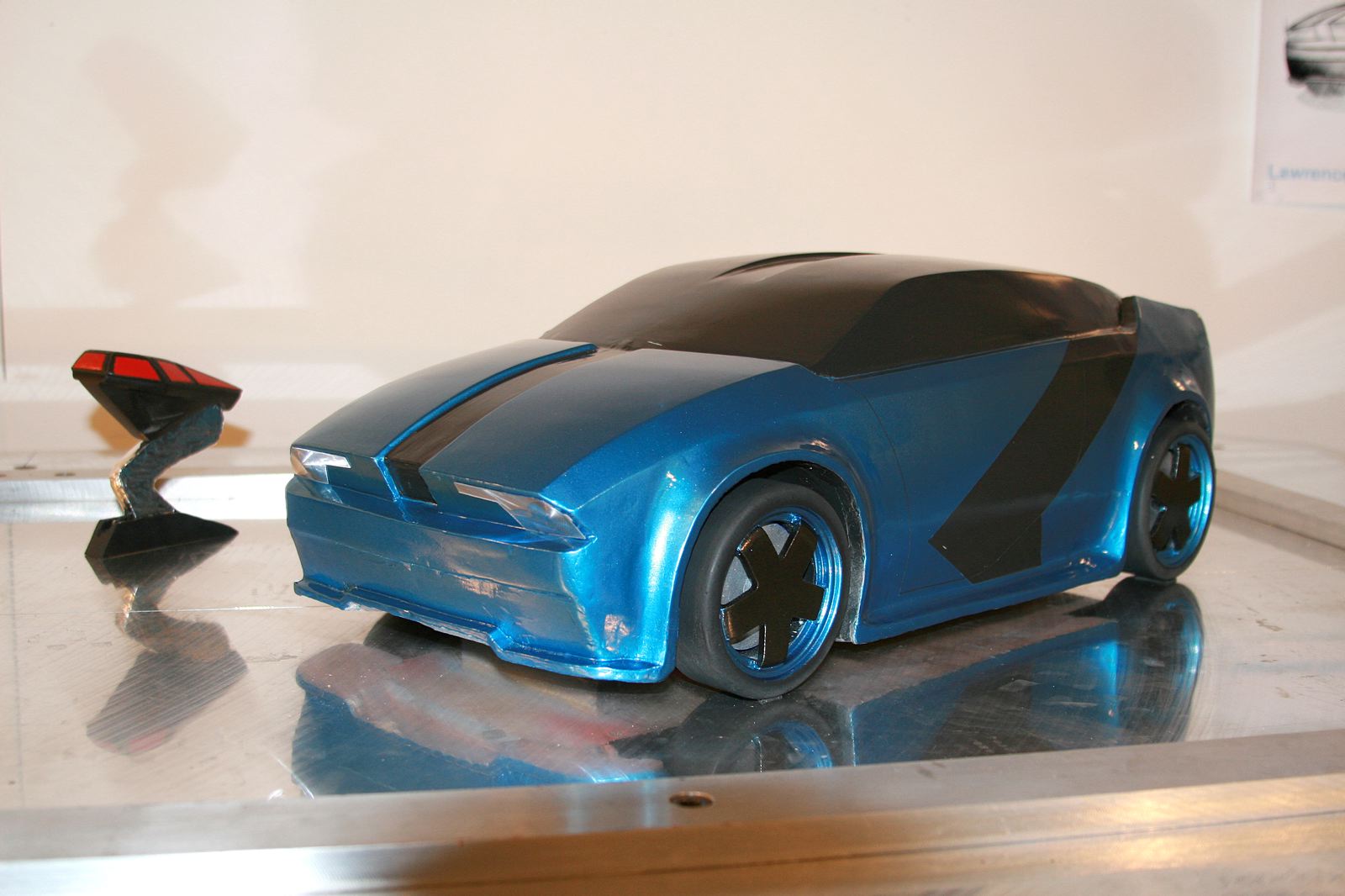
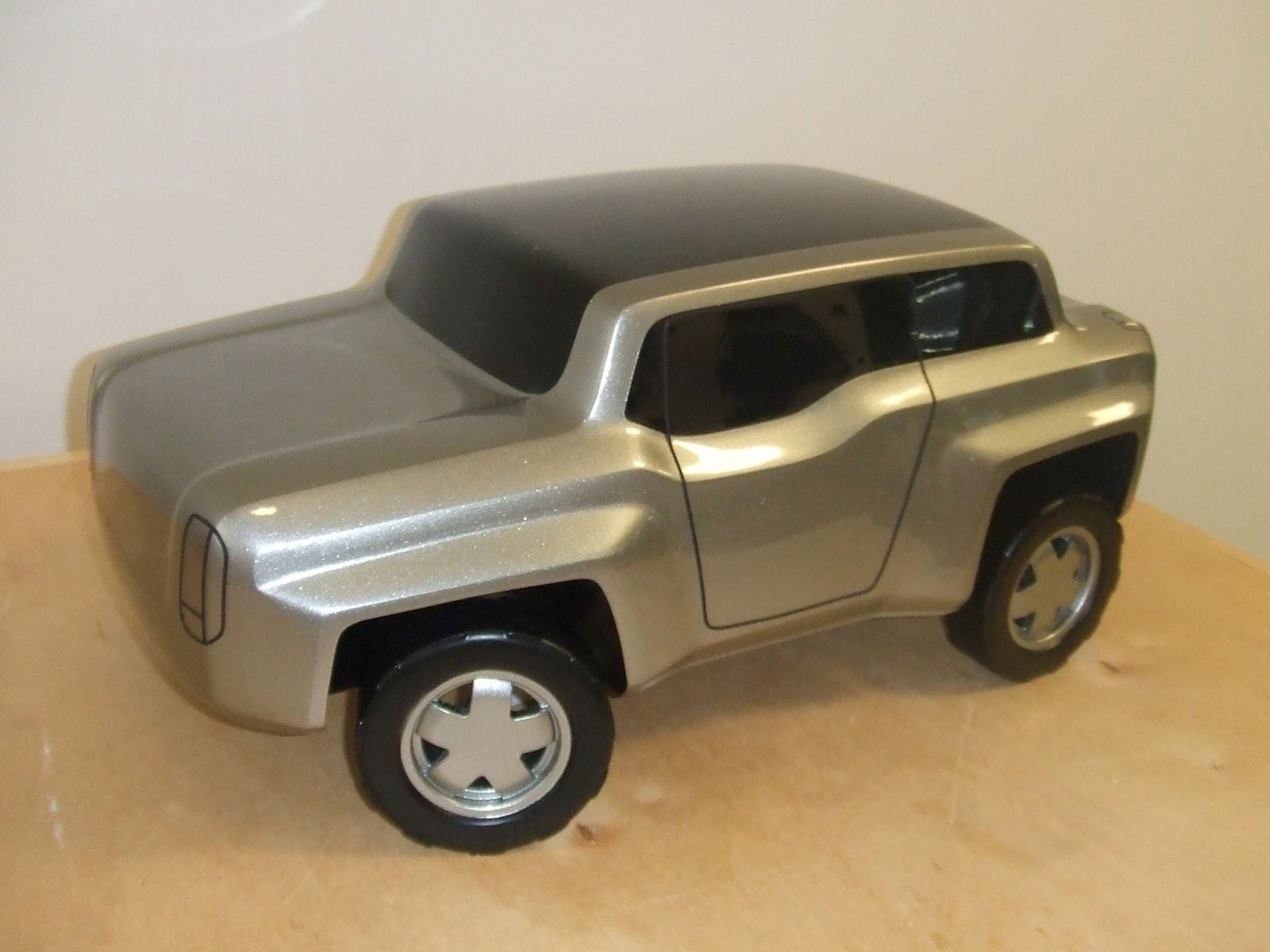
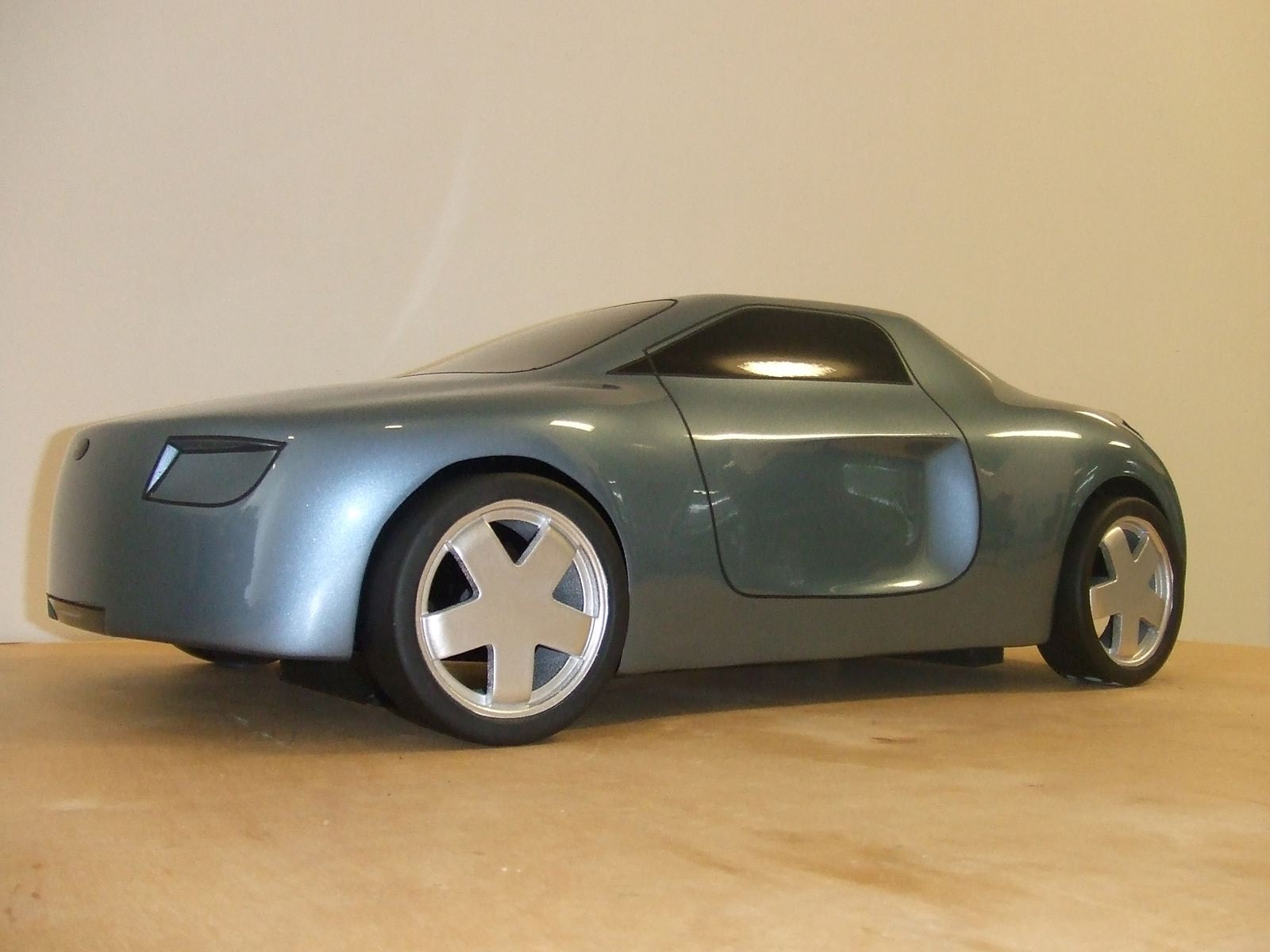

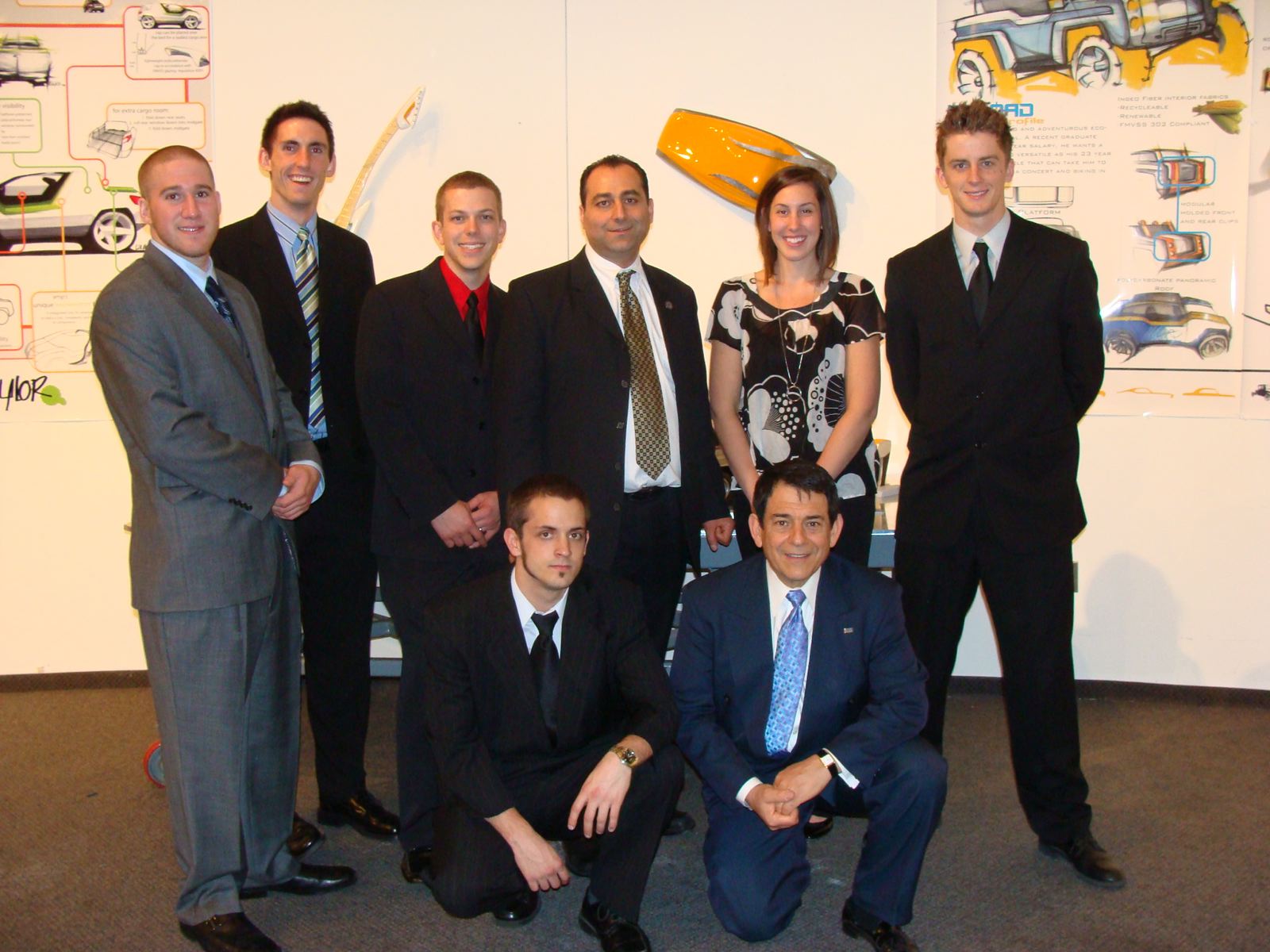
On Thursday 8 May 2008, Lawrence Technological University (LTU) celebrated their Inaugural Transportation Design Freshmen Show at the school's campus in Southfield, Michigan. The Inaugural Show - sponsored Ford Motor Company - exhibited projects completed in a course of a single semester (15 weeks) from sketch to model by six freshman students. The brief was to develop a vehicle concept that utilized Ford's small vehicle platform in order to address environmental issues while attracting new customers.
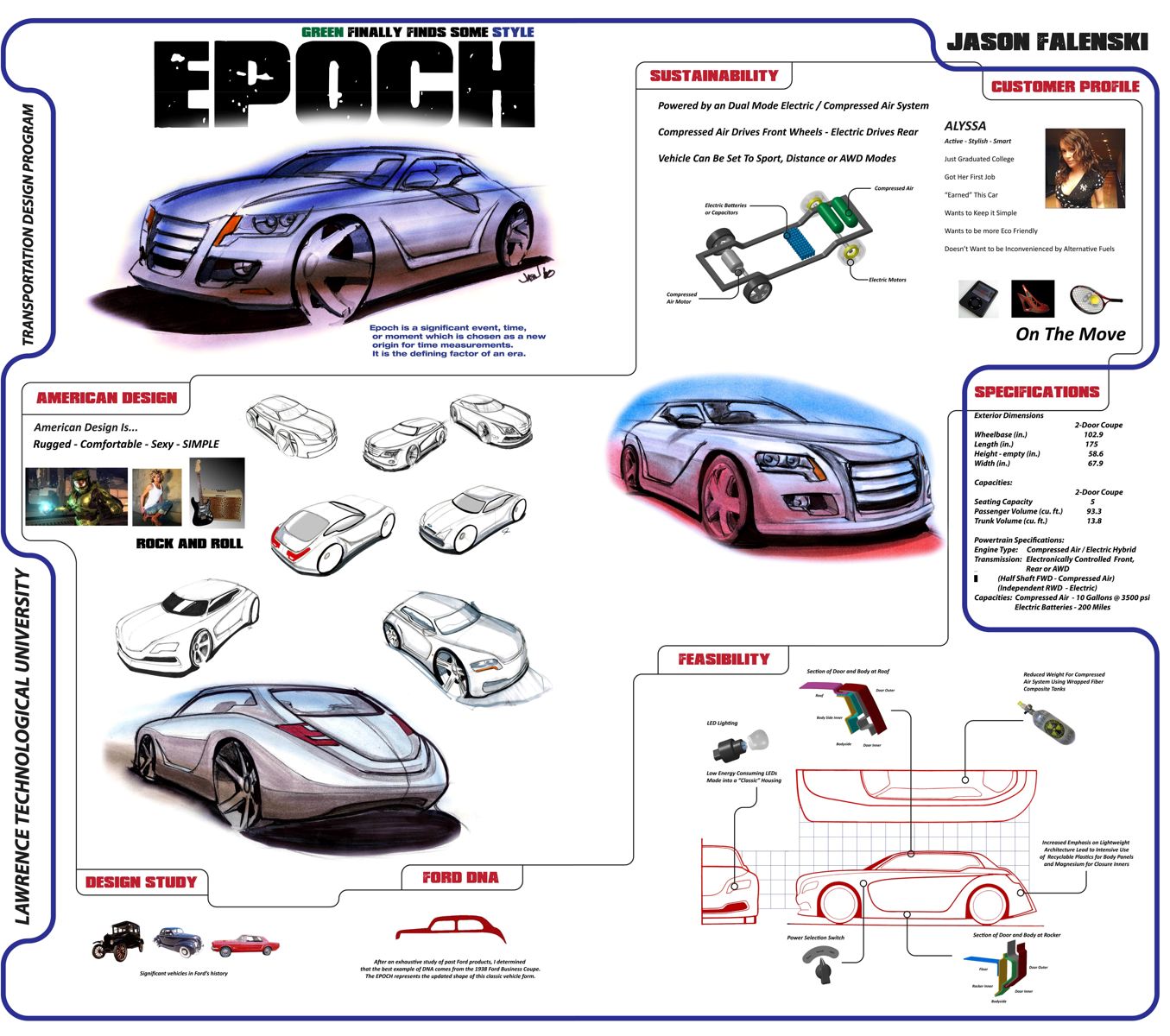
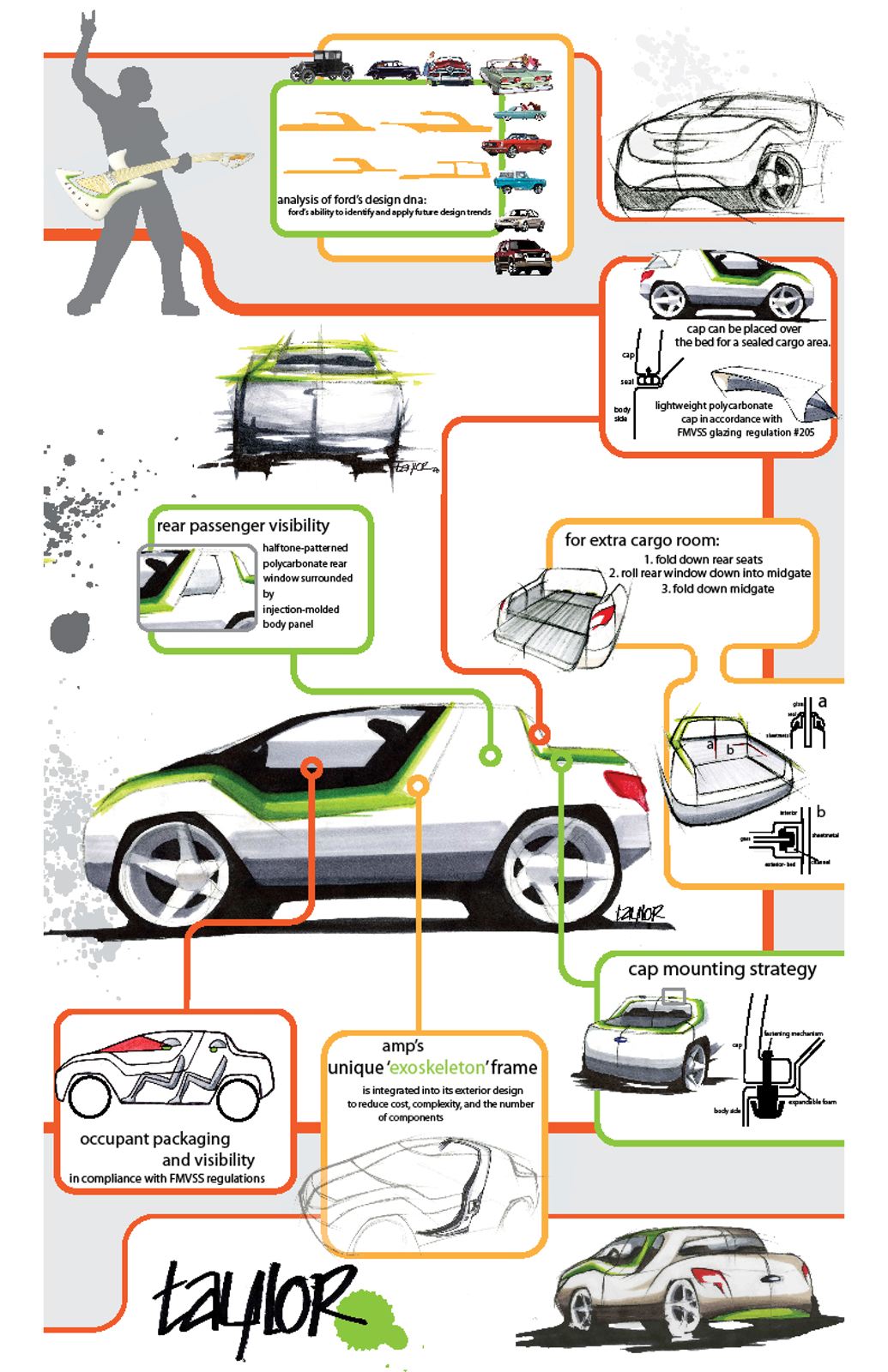

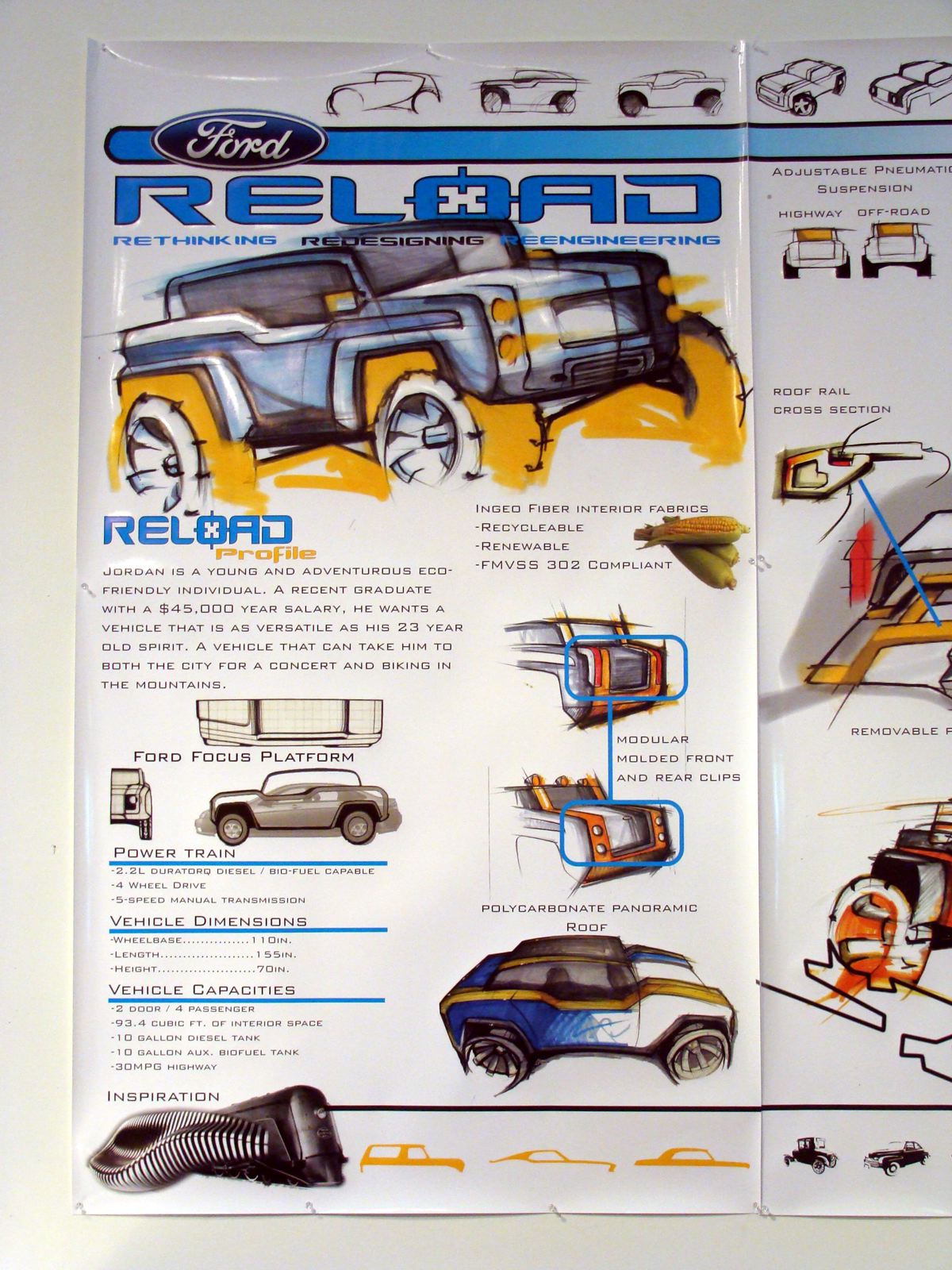

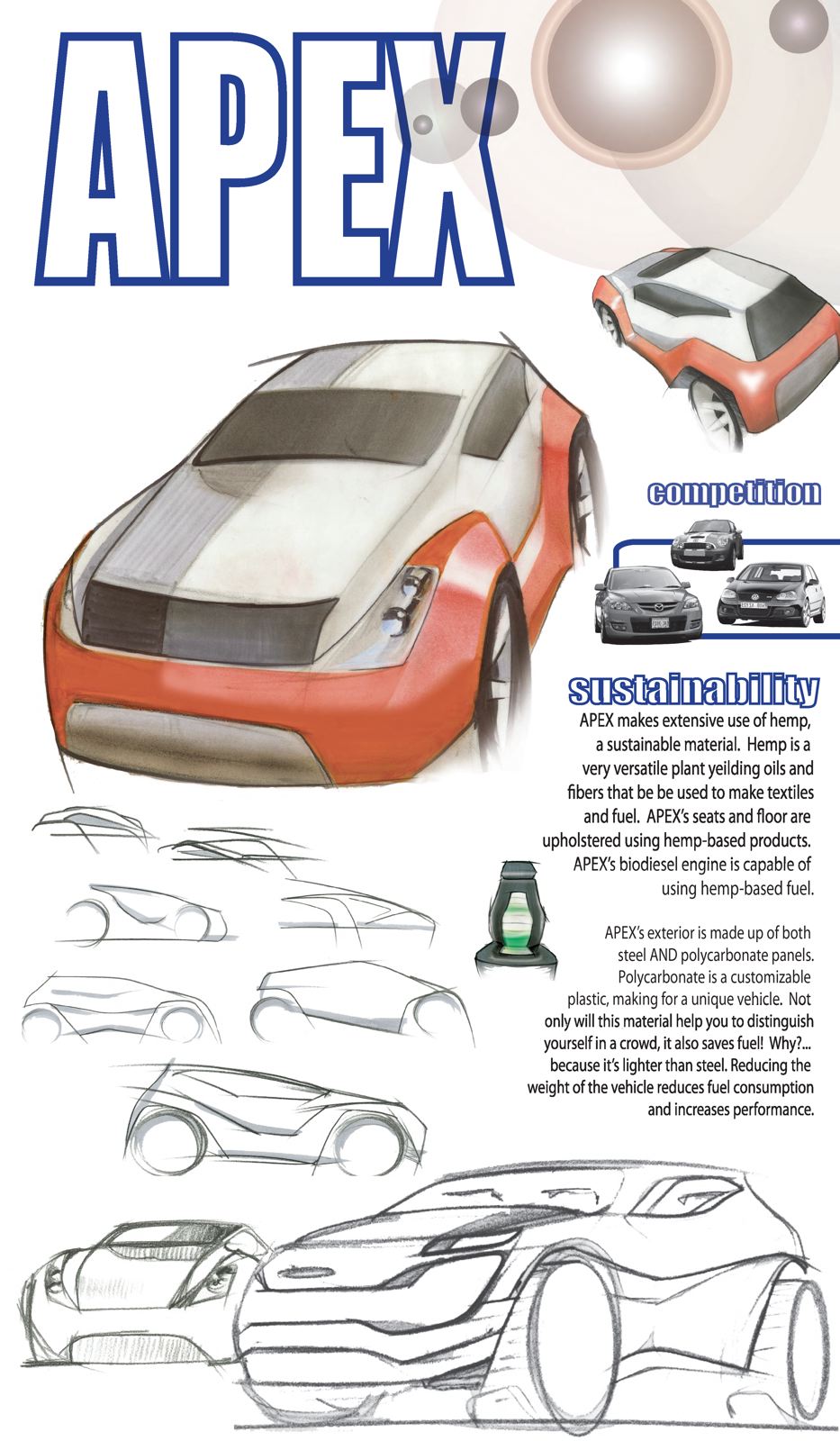
Epoch concept
Jason Falenski
The Epoch is the new definition of sustainability with style. It merges the classic shape of the 1938 business coupe with the modern three bar grille and headlamps of modern day to bring a new and exciting type of hatchback to the market. Running on a dual hybrid compressed air/electric system, the Epoch would never need to be refilled or plugged in. Onboard compressors and generators keep the vehicle moving so active customers never have to worry about where to fill up or plug in.
AMP concept
Taylor Manuilow
The guitar-inspired Amp is redefining the small vehicle. It's a sporty, four passenger C-segment modular car that can be transformed from a small pickup to a crossover vehicle by fitting a removable polycarbonate cap. A midgate dividing the passenger and cargo compartments can be folded down if more cargo space is needed. In response to recent environmental concerns, Amp's design is focused on sustainability: it's lightweight, uses natural, renewable interior fibers, and reduces the overall complexity and number of components by integrating the structural frame into the exterior design.
FCR concept
Ben Graf
The FCR was designed with sustainability, functionality and excitement as key features. Using recyclable polycarbonate body panels instead of traditional sheet metal and glass to reduce weight, the mid-engine FCR is built upon a weight saving hydroformed chassis and is powered by propane. An electronically adjustable suspension and steering allow for flexibility between everyday city driving and aggressive weekend track racing. Interior materials are derived from renewable sources such as soy, corn and coconut.
Reload concept
Chris Nichols
An adventurous, efficient, and simple C-segment crossover, the Reload concept was designed for efficient travel in and around the city or into the mountains. The Reload's boldly shaped greenhouse and body lines, as well the integration of the frame into the exterior design, were inspired by 1950s trains and vehicle grilles. Featuring a lightweight polycarbonate detachable roof, the Reload includes modular molded front and rear sections to decrease tooling costs and interior fabrics that are made from recyclable corn-based Ingeo fibers.
Fletch concept
William Consiglio
An environmentally-conscious sports car that draws inspiration from the sharp lines and sleekness of an arrow, the Fletch concept features several weight-reduction techniques to enhance its eco-friendly appeal. It has an extruded aluminum frame and chassis that are stronger and lighter than a traditional steel frame and chassis and the glass and paneling are manufactured out of thermoplastics and composite materials, which reduce weight by up to 12 percent.
APEX concept
David Boehmer
This four passenger three-door sport hatch targets male buyers between the ages of 18 and 32. With a design inspired by snowboard bindings, the APEX features detachable and interchangeable organic fiber-based biodegradable body panels which vary in color, texture and form for endless vehicle customization. It also features shift-by-wire technology allowing for more design freedom in the interior while decreasing vehicle weight.
LTU's Transportation Design Program was created in response to demand from the industry in late 2005. The University did a global benchmark analysis of design colleges and met with industry recognized professionals and design studios. At the end of this study, Keith Nagara and Vance Hanna were enlisted to craft the curriculum over the few months of the 2006 summer. After presenting it to the industry, the merits of the program yielded financial contributions from Ford and other OEMs.

































